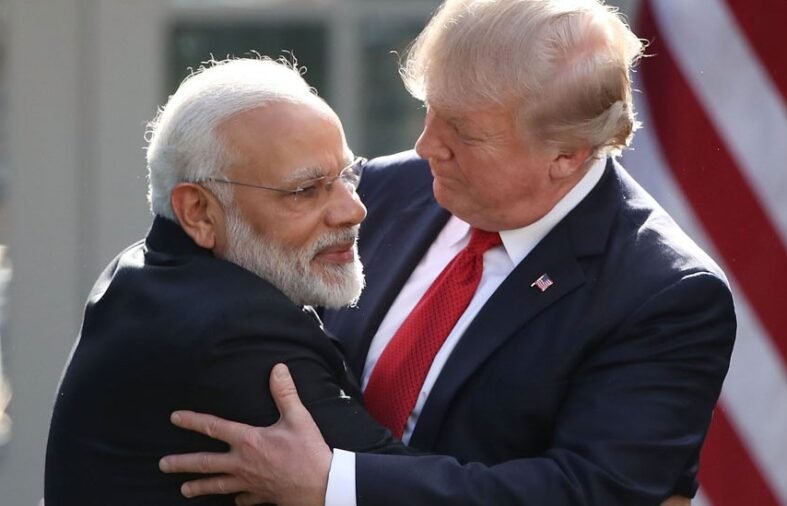New Delhi, May 18, 2025 – India and the United States are accelerating efforts to finalize a bilateral trade agreement (BTA) by July 8, 2025, as a temporary 90-day suspension of U.S. reciprocal tariffs approaches its halfway mark. The negotiations aim to elevate bilateral trade to $500 billion by 2030, navigating a complex landscape of recent tariff disputes and India’s push to lower trade barriers with its key trading partner.
Historical Context: A Complex Trade Relationship
The U.S.-India trade partnership, valued at $131.84 billion in 2024, has faced recurring tariff-related friction. India’s relatively high tariffs, averaging 17% compared to the U.S.’s 2.2%, have long been a sticking point, with U.S. leaders, including President Donald Trump, criticizing India’s trade policies. In 2018, the U.S. levied 25% tariffs on Indian steel and aluminum, citing security concerns, prompting India to impose retaliatory duties on 28 U.S. products, such as walnuts and chickpeas, in 2019. Progress was made in 2023 during Prime Minister Narendra Modi’s U.S. visit, resolving six World Trade Organization disputes and laying the groundwork for deeper cooperation.
Tensions reemerged in 2025 when, on April 2, President Trump introduced a 26% reciprocal tariff on Indian goods, alongside a 10% baseline tariff on all imports, effective April 5. Certain sectors, including pharmaceuticals, semiconductors, and energy products, were exempted, easing the impact on India’s key industries. On April 9, the U.S. paused these tariffs for 90 days to facilitate negotiations, a step also taken with other trading partners like China. India initially refrained from counter-tariffs but recently proposed duties on select U.S. products, such as steel and aluminum, in response to U.S. tariffs imposed in March 2025.
Current Developments: Progress and Pushback
India and the U.S. are working toward a comprehensive trade deal, with India proposing significant tariff reductions on 55% of U.S. imports valued at $23 billion, narrowing the tariff differential from 13% to below 4%. India has also offered a “zero-for-zero” tariff arrangement for auto parts and zero tariffs on most U.S. goods, excluding sensitive agricultural items like rice, wheat, maize, and dairy. The U.S. is pressing India to further lower tariffs and boost purchases of American defense equipment.
On May 12, India signaled a shift by proposing retaliatory tariffs at the WTO, targeting U.S. duties affecting $7.6 billion in Indian exports. This move followed months of restraint, as India prioritized dialogue. Commerce Minister Piyush Goyal is leading a delegation in Washington for talks that began May 17, engaging with U.S. Trade Representative Jamieson Greer and Commerce Secretary Howard Lutnick. The discussions focus on market access, rules of origin, and non-tariff barriers, with India aiming to finalize the BTA’s first phase by October. An Indian official expressed confidence, stating, “Our focus is on a mutually beneficial deal, and we’re committed to meeting the deadline.”
Economic Impact and Future Prospects
If the U.S. reinstates tariffs post-pause, Indian industries like textiles, electronics, and gems could face challenges, though pharmaceutical exemptions provide relief. Economic forecasts suggest India’s growth may dip slightly, by 20-40 basis points, to around 6.1% for 2025/26. However, India could gain from global supply chain realignments, as U.S. tariffs on China (54%) and Vietnam (46%) drive trade toward India.
India’s stock markets have reacted positively to trade talk advancements, with the Nifty 50 and BSE Sensex gaining 1.6% and 1.48%, respectively, on May 8, hitting seven-month peaks. The U.S.-India COMPACT, unveiled on April 2, aims to foster collaboration and reduce trade hurdles, boosting investor optimism.
The Road Ahead
India’s recent retaliatory tariff proposal introduces uncertainty, with analysts warning it could complicate negotiations. External Affairs Minister S. Jaishankar noted, “Trade agreements require balance and patience, but we’re committed to a fair outcome.” With India’s trade minister potentially traveling to the U.S. soon, both nations are focused on securing an interim deal before the tariff suspension expires.
The outcome of these talks will shape U.S.-India economic ties, with the potential to either strengthen cooperation or heighten tensions if no agreement is reached. For now, diplomacy remains the priority, with global observers closely monitoring progress.
Sources: Trade policy updates and economic analyses











Leave A Reply